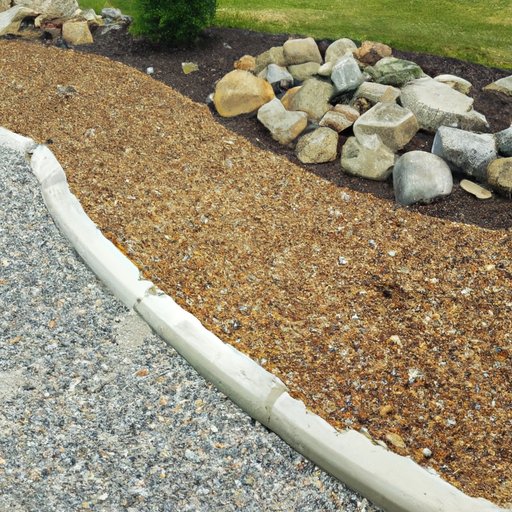Introduction
Weed prevention and control are essential components of landscaping. Keeping weeds at bay can be a challenge, especially when dealing with rock beds. Preen is a popular weed prevention product that has been used by gardeners for decades. But does it really work in rock beds? Read on to find out.
Examining the Effectiveness of Preen in Rock Beds
Preen is a pre-emergent herbicide that works by forming a protective barrier around the soil. When applied to the soil, it prevents weed seeds from germinating. It also helps keep existing weeds from spreading. Preen is available in both granular and liquid form, and can be used in both vegetable and flower gardens.
When used in rock beds, Preen can be effective in preventing weeds from growing. However, there are some advantages and disadvantages to using Preen in this way. On the plus side, Preen can help keep weeds from taking over the rocks and creating an unsightly mess. On the downside, Preen can be difficult to apply evenly in rock beds and may not provide complete coverage.

A Comprehensive Guide to Using Preen in Rock Beds
For maximum effectiveness, it’s important to prepare the rocks before applying Preen. Start by removing any loose debris or weeds from the area. Then, use a rake to level the rocks and create an even surface. This will help ensure that the Preen is distributed evenly and that all areas of the rock bed are covered.
Once the rocks are prepared, it’s time to apply the Preen. For granular Preen, sprinkle it evenly over the rocks and then lightly water it in. For liquid Preen, use a spray bottle to apply it directly to the rocks. Be sure to cover all areas of the rock bed. Finally, use a broom or rake to spread the Preen evenly.
After applying Preen, it’s important to water the rocks regularly to help the product work more effectively. Watering also helps the Preen penetrate into the soil, which can help prevent new weed seeds from germinating. Additionally, it’s important to check the rock bed periodically for any new weeds and remove them as soon as possible.

The Benefits and Drawbacks of Applying Preen in Rock Beds
Using Preen in rock beds can be beneficial in many ways. It can help keep weeds from taking over the rocks, which can help maintain the beauty of the landscape. Additionally, Preen can help reduce the amount of time spent weeding, since it prevents new weeds from germinating. Finally, Preen is long-lasting, so it can provide protection for up to six months.
However, there are some drawbacks to using Preen in rock beds. For one, it can be difficult to apply evenly, which can lead to patchy coverage and ineffective weed control. Additionally, Preen can be toxic to plants, so it’s important to use it sparingly and avoid getting it on other plants. Finally, Preen is not effective against existing weeds, so they must be removed manually.
How to Apply Preen in Rock Beds for Maximum Weed Control
To get the most out of Preen in rock beds, it’s important to choose the right product and apply it correctly. Granular Preen is usually the best option, as it’s easier to distribute evenly and provides more coverage than liquid Preen. When applying the product, be sure to cover all areas of the rock bed and water it in after application. Additionally, it’s important to reapply Preen every six months for maximum effectiveness.
Does Preen Really Work in Rock Beds?
There is some evidence that Preen can be effective in rock beds. Studies have shown that Preen can help prevent weeds from germinating and spreading. Additionally, experienced gardeners have reported good results when using Preen in rock beds. However, it’s important to remember that Preen is not a silver bullet and must be used in conjunction with other weed control methods.
Weeding Out the Facts: Does Preen Work in Rock Beds?
The research suggests that Preen can be effective in rock beds, but it’s important to understand the limitations of the product. Preen is not effective against existing weeds, so they must be removed manually. Additionally, Preen must be applied correctly and regularly to ensure maximum effectiveness. Finally, it’s important to remember that Preen is a chemical product, so it should be used with caution and avoided around other plants.

Improve Your Landscaping with Preen: What You Need to Know About Using It in Rock Beds
If you’re looking for a way to control weeds in rock beds, Preen may be worth considering. To get the most out of the product, be sure to choose the right product and apply it correctly. Additionally, it’s important to water the rocks regularly and reapply Preen every six months. Finally, remember that Preen is not a substitute for manual weeding and should be used in conjunction with other weed control methods.
Conclusion
Preen can be an effective tool for controlling weeds in rock beds. However, it’s important to understand the limitations of the product and use it correctly. With proper preparation, application, and maintenance, Preen can help keep weeds at bay and maintain the beauty of your landscape.


